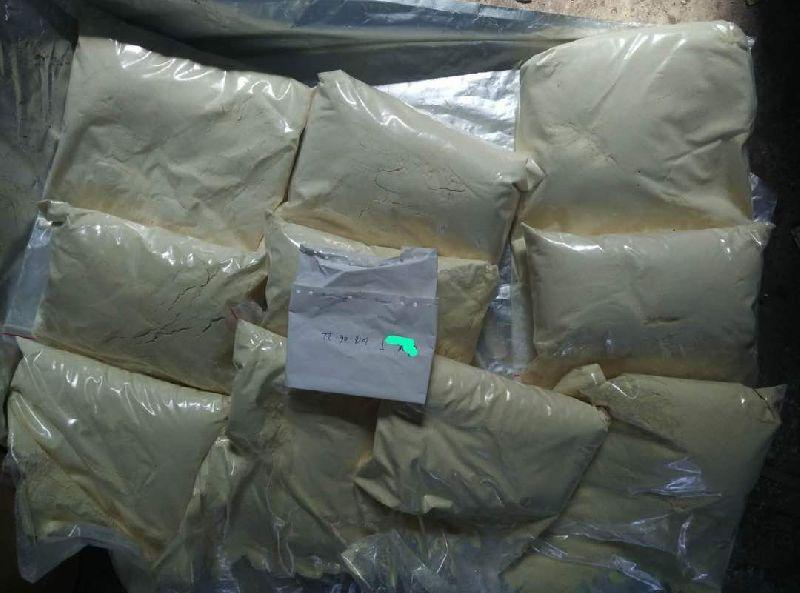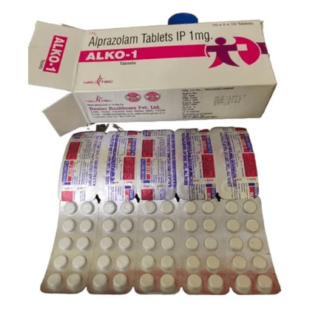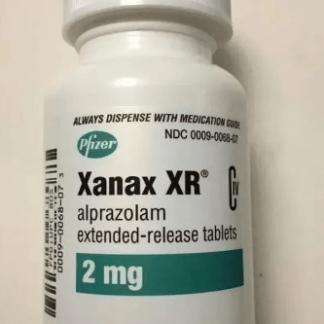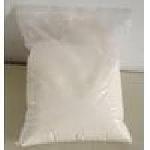Description
How to Keep A Comprehensive Guide
is a synthetic cannabinoid that was first developed by Dr. John W. Huffman in the 1990s. It is known for its psychoactive effects and is often used as a recreational drug. However, due to its potential for abuse and legal restrictions in many countries, it is important to handle and store JWH-018 safely and responsibly.
1. Legal Considerations
Before acquiring or possessing , it is crucial to understand the legal status of the substance in your country or region. Laws regarding synthetic cannabinoids can vary significantly, and possession or distribution of JWH-018 may be illegal in many jurisdictions. It is essential to consult local laws and regulations to ensure compliance.
2. Storage Conditions
Proper storage of is vital to maintain its potency and prevent degradation. Here are some guidelines to follow:
– Temperature:
Store in a cool, dry place away from direct sunlight and heat sources. Excessive heat can accelerate the degradation process.
– Container:
Use an airtight container made of glass or high-quality plastic to store JWH-018. This will help prevent moisture and air exposure, which can degrade the compound.
– Labeling:
Clearly label the container with the name of the substance, date of acquisition, and any relevant safety information.
– Accessibility:
Keep out of reach of children, pets, and unauthorized individuals. Store it in a secure location to prevent accidental ingestion or misuse.
3. Handling Procedures
When handling , it is important to take precautions to ensure personal safety and minimize the risk of contamination:
– Protective Gear:
Wear appropriate personal protective equipment (PPE) such as gloves, goggles, and a lab coat when handling . This will help prevent direct contact with the substance and minimize the risk of skin or eye irritation.jwh 018,jwh 018,
– Ventilation:
Work in a well-ventilated area to minimize exposure to potentially harmful fumes or vapors. If working indoors, consider using a fume hood or opening windows to ensure adequate airflow.
– Spills and Contamination: In the event of a spill, clean it up immediately using appropriate procedures. Use absorbent materials such as paper towels or jwh 018spill kits designed for chemical spills. Avoid spreading the substance and dispose of contaminated materials properly.
– Waste Disposal: Dispose of any unused or expired J according to local regulations. Contact your local waste management authority for guidance on proper disposal methods.jwh 018,forced lightdark test,effects of developmental exposure
4. Security Measures
Given the legal restrictions and potential for abuse associated with , it is crucial to implement security measures to prevent unauthorized access or theft:jwh 018. developmental exposure to jwh018
– Locking Storage:
Store in a locked cabinet, safe, or secure storage area. Restrict access to authorized individuals only.jwh 018,jwh 018, jwh 018, jwh 018, jwh 018, jwh 018. exposure to jwh018 in wild
– Inventory Control:
Keep a detailed inventory log of , including quantities acquired, used, and remaining. Regularly reconcile the inventory to identify any discrepancies.
– Surveillance:
Consider installing security cameras or alarm systems in areas where is stored. This can deter theft and provide evidence in case of any unauthorized access.
In conclusion, keeping requires adherence to legal considerations, proper storage conditions, safe handling procedures, and security measures. By following these guidelines, you can ensure the responsible management of this synthetic cannabinoid.
is a synthetic cannabinoid that belongs to the family of chemicals known as naphthoylindoles. It was first synthesized by Dr. John W. Huffman in the early 1990s at Clemson University as part of a research project on the endocannabinoid system. JWH-018 gained popularity as a recreational drug due to its psychoactive effects, which mimic those of THC, the main psychoactive compound found in cannabis.
is chemically classified as a synthetic cannabinoid, meaning it is designed to mimic the effects of natural cannabinoids found in cannabis plants. Synthetic cannabinoids are often referred to as designer drugs because they are created in laboratories with the intention of producing specific effects similar to those of cannabis.
The chemical structure of consists of a naphthalene ring system substituted with an indole group at the 1-position, and a pentyl chain at the 3-position. This structural similarity to THC allows to bind to and activate cannabinoid receptors in the brain and other parts of the body.
is typically sold as a white or off-white powder, but it can also be found in liquid form or infused into herbal smoking blends. It is commonly marketed under various brand names such as Spice, K2, and Herbal Incense. These products are often labeled as “not for human consumption” to bypass legal restrictions.
When consumed, interacts with cannabinoid receptors, primarily CB1 receptors, which are mainly located in the central nervous system. Activation of these receptors leads to various psychoactive effects such as euphoria, relaxation, altered perception of time and space, increased sociability, and heightened sensory perception. However, it is important to note that can also produce negative side effects including anxiety, paranoia, hallucinations, rapid heart rate, and increased blood pressure.
Due to its psychoactive effects and easy availability, has gained popularity as a recreational drug. It is often used as a substitute for cannabis, especially in regions where cannabis is illegal or difficult to obtain. However, the use of carries significant risks, as its long-term effects on human health are not well understood.
The legal status of varies from country to country. In many jurisdictions, it is classified as a controlled substance and its possession, distribution, and use are illegal. However, the chemical structure of can be modified slightly to create new compounds that are not yet regulated by existing drug laws. This has led to the emergence of numerous analogs and derivatives of , further complicating legal control efforts.
The use of synthetic cannabinoids like has been associated with a number of adverse health effects. These include acute intoxication, respiratory problems, cardiovascular complications, kidney damage, seizures, and even death in some cases. Synthetic cannabinoids have also been linked to an increased risk of addiction and psychological dependence.
In recent years, there have been numerous reports of hospitalizations and deaths related to the use of synthetic cannabinoids containing . These incidents have prompted regulatory authorities to take action against the production and distribution of these substances. Many countries have implemented bans on specific synthetic cannabinoids or entire classes of these drugs in an attempt to curb their availability and reduce harm to public health.
In conclusion, is a synthetic cannabinoid that was developed as a research tool but has gained popularity as a recreational drug due to its psychoactive effects. It mimics the effects of THC by binding to cannabinoid receptors in the brain and other parts of the body. However, the use of carries significant risks and has been associated with various adverse health effects. Its legal status varies from country to country, but regulatory authorities are taking steps to control its production and distribution.
JWH-018 is a synthetic cannabinoid that belongs to the family of chemicals known as naphthoylindoles. It was first synthesized by Dr. John W. Huffman in the early 1990s at Clemson University, hence the name JWH-018. This compound is often referred to as a designer drug due to its psychoactive effects and its similarity to the active ingredient found in cannabis, delta-9-tetrahydrocannabinol (THC). In this comprehensive guide, we will explore various aspects of , including its history, chemical structure, effects, legality, and methods of detection.
History:
was initially developed for scientific research purposes to study the endocannabinoid system and its receptors in the brain. Dr. Huffman and his team were investigating the potential therapeutic applications of cannabinoids when they synthesized . However, it soon gained popularity as a recreational drug due to its ability to mimic the effects of THC.
Chemical Structure:
is a synthetic compound with a complex chemical structure. Its systematic name is 1-pentyl-3-(1-naphthoyl)indole. The compound consists of a naphthalene ring fused with an indole ring and has a pentyl chain attached to the nitrogen atom of the indole ring. This structural similarity to THC allows to bind to cannabinoid receptors in the brain and produce psychoactive effects.
Effects:
acts as an agonist at cannabinoid receptors, primarily targeting CB1 receptors in the brain. When consumed, it produces a range of psychoactive effects similar to those of cannabis. These effects can include relaxation, euphoria, altered perception of time, increased sociability, and heightened sensory perception. However, it is important to note that can also have adverse effects, such as anxiety, paranoia, rapid heart rate, and hallucinations. The intensity and duration of these effects can vary depending on the dosage and individual tolerance.
Legality:
The legal status of varies from country to country. In many jurisdictions, it is classified as a controlled substance due to its potential for abuse and lack of accepted medical use. The United States, for example, has listed as a Schedule I controlled substance since 2011. This means that it is illegal to manufacture, possess, or distribute within the country. Other countries have also implemented similar regulations to control the use and distribution of synthetic cannabinoids like .
Methods of Detection:
Detecting the presence of JWH-018 can be challenging due to its chemical structure and the constantly evolving nature of synthetic cannabinoids. However, several methods have been developed for its identification. Gas chromatography-mass spectrometry (GC-MS) is commonly used in forensic laboratories to analyze biological samples for the presence of and other synthetic cannabinoids. This technique allows for accurate identification and quantification of the compound.
Another method used for detection is immunoassay testing, which relies on antibodies that specifically bind to JWH-018 or its metabolites. These tests are often used in preliminary screenings but may produce false positives or false negatives due to cross-reactivity with other substances.
It is worth noting that the detection window for JWH-018 can vary depending on factors such as dosage, frequency of use, and individual metabolism. In general, JWH-018 and its metabolites can be detected in urine samples for up to several days after use.
In conclusion, JWH-018 is a synthetic cannabinoid that was initially developed for scientific research purposes but gained popularity as a recreational drug due to its psychoactive effects. Its chemical structure closely resembles THC, allowing it to bind to cannabinoid receptors in the brain. The effects of JWH-018 can range from relaxation and euphoria to anxiety and paranoia. The legal status of JWH-018 varies across different jurisdictions, with many countries classifying it as a controlled substance. Various methods, such as GC-MS and immunoassay testing, can be used for the detection of JWH-018 in biological samples.
JWH-018 is a synthetic cannabinoid that was first created in the early 1990s by Dr. John W. Huffman, a professor of organic chemistry at Clemson University. The compound belongs to the family of chemicals known as indole-based cannabinoids and is designed to mimic the effects of THC, the primary psychoactive component found in cannabis.
The process of creating JWH-018 involves several steps, starting with the synthesis of the indole core structure. Indole is a heterocyclic compound that consists of a benzene ring fused to a pyrrole ring. This core structure serves as the foundation for many synthetic cannabinoids, including JWH-018.
To create JWH-018, Dr. Huffman and his team modified the indole structure by adding various substituents to different positions on the molecule. These substituents are responsible for the specific pharmacological properties of JWH-018, including its affinity for cannabinoid receptors in the brain.
One of the key steps in the synthesis of JWH-018 involves the introduction of a naphthoyl group at the 3-position of the indole ring. This naphthoyl group is derived from naphthalene, a polycyclic aromatic hydrocarbon. The addition of this group enhances the binding affinity of JWH-018 for cannabinoid receptors, making it more potent than natural cannabinoids found in cannabis.
After introducing the naphthoyl group, other modifications can be made to further fine-tune the properties of JWH-018. These modifications may include changes to the alkyl side chains or substitutions on other positions of the molecule. By altering these structural features, researchers can create different analogs of JWH-018 with varying potencies and selectivities for different cannabinoid receptor subtypes.
It is important to note that JWH-018 and other synthetic cannabinoids are typically created for research purposes and not for human consumption. These compounds are often used in laboratory settings to study the effects of cannabinoids on the endocannabinoid system and to develop new medications for various conditions.
However, due to their psychoactive properties, synthetic cannabinoids like JWH-018 have also gained popularity as recreational drugs. They are often sold under various street names and marketed as legal alternatives to cannabis. The use of these substances can have serious health risks, as their effects on the body and brain are not well understood, and they may have unpredictable and potentially harmful side effects.
In recent years, there has been a growing concern about the use of synthetic cannabinoids, including JWH-018, due to their potential for abuse and adverse health effects. Many countries have implemented strict regulations and bans on these substances to protect public health.
In conclusion, JWH–018 is a synthetic cannabinoid that was created by Dr. John W. Huffman and his team at Clemson University. The compound is synthesized by modifying the indole core structure and introducing various substituents, such as a naphthoyl group, to enhance its affinity for cannabinoid receptors. While JWH-018 was initially developed for research purposes, it has also been abused as a recreational drug, leading to concerns about its safety and potential health risks.
JWH-018 is a synthetic cannabinoid that belongs to the family of chemicals known as naphthoylindoles. It was first synthesized by Dr. John W. Huffman in the early 1990s at Clemson University as part of his research on the endocannabinoid system. JWH-018 is known for its psychoactive effects and is often used as a recreational drug due to its similarity to the effects of cannabis.
Transportation of JWH–018 can occur through various means, including both legal and illegal channels. The transportation of this substance can be categorized into two main types: legal transportation for research purposes and illegal transportation for illicit use.
In the case of legal transportation, JWH-018 is typically transported by authorized research institutions or pharmaceutical companies. These organizations may obtain the substance from licensed suppliers or manufacturers who produce it for scientific purposes. The transportation process usually involves strict regulations and compliance with local laws regarding the handling and shipment of controlled substances.
The transportation of JWH-018 for illicit use, on the other hand, occurs through illegal channels such as drug trafficking networks. Illicitly produced JWH-018 is often manufactured in clandestine laboratories, primarily located in countries with lax regulations on controlled substances. Once produced, it can be transported across borders through various means, including smuggling methods such as concealment in vehicles, packages, or even human carriers.
The transportation routes for illicit JWH-018 can vary depending on the origin and destination of the shipment. In some cases, it may be transported directly from the manufacturing country to the destination country. However, due to increased law enforcement efforts and international cooperation, drug traffickers often employ more complex routes to avoid detection.
One common method used in the transportation of illicit drugs is known as “drug mules.” Drug mules are individuals who transport drugs internally within their bodies or by concealing them in their luggage or personal belongings. This method allows traffickers to bypass traditional security measures and increase the chances of successful transportation.
Another method used in the transportation of JWH-018 is through postal services or courier companies. Traffickers may use false identities or fake addresses to send packages containing the substance. They may also employ various techniques to conceal the illicit nature of the shipment, such as using innocuous packaging materials or disguising the substance as a legal product.
The transportation of JWH-018 is not limited to physical means alone. With the advent of the internet and darknet marketplaces, illicit drugs, including synthetic cannabinoids like JWH-018, can be easily purchased and transported through online platforms. These online transactions often involve encrypted communication channels and anonymous payment methods, making it difficult for law enforcement agencies to track and intercept such shipments.
It is important to note that the transportation of JWH-018 for illicit purposes is illegal in most countries due to its potential for abuse and harm. The substance has been associated with various adverse effects, including cardiovascular problems, respiratory issues, and psychological disturbances. Its use has also been linked to addiction and dependence.
In conclusion, JWH-018 can be transported through both legal and illegal channels. Legal transportation occurs primarily for research purposes and involves strict regulations and compliance with local laws. Illicit transportation, on the other hand, involves illegal drug trafficking networks that employ various methods to transport the substance across borders. These methods include drug mules, postal services, courier companies, and online platforms. It is crucial to combat the illicit transportation of JWH-018 due to its potential for abuse and associated health risks.
JWH-018, also known as AM-678, is a synthetic cannabinoid that was first synthesized by John W. Huffman in the early 1990s. It belongs to the family of chemicals known as indole-based cannabinoids and is structurally similar to THC, the main psychoactive compound found in cannabis. JWH-018 gained popularity as a recreational drug due to its ability to mimic the effects of THC when consumed.
Smell:
JWH-018 is a white crystalline powder that is odorless in its pure form. However, when it is smoked or vaporized, it can produce a distinct smell that is often described as herbal or similar to burnt leaves. The smell can vary depending on the method of consumption and the presence of other substances mixed with JWH-018.
Use:
JWH-018 is primarily used for its psychoactive effects, which are similar to those produced by THC. It acts as a potent agonist of the cannabinoid receptors in the brain, specifically targeting the CB1 receptor. When consumed, JWH-018 binds to these receptors and activates them, leading to various physiological and psychological effects.
The most common route of administration for JWH-018 is smoking or vaporizing the substance. It is often sold in the form of herbal blends or incense products labeled as “spice” or “herbal smoking blends.” These products are typically marketed as legal alternatives to cannabis and are sold in head shops or online.
When smoked or vaporized, JWH-018 produces a range of effects that are similar to those of cannabis. Users report feelings of relaxation, euphoria, increased sociability, and altered perception of time. Some individuals may also experience heightened sensory perception and enhanced creativity. However, it is important to note that the effects can vary widely between individuals, and adverse reactions are not uncommon.
Due to its psychoactive properties, JWH-018 has been associated with a number of health risks and adverse effects. These can include increased heart rate, elevated blood pressure, anxiety, paranoia, hallucinations, and even seizures. Long-term use of JWH-018 may also lead to dependence and addiction.
It is worth noting that the use of JWH-018 as a recreational drug has been banned in many countries due to its potential for abuse and harmful effects. In the United States, for example, it was classified as a Schedule I controlled substance in 2011, making it illegal to possess or distribute.
In recent years, there have been reports of JWH-018 being used as an adulterant in illicit drugs such as synthetic cannabis products or counterfeit THC vape cartridges. This poses additional risks to users who may unknowingly consume the substance along with other drugs.
In conclusion, JWH-018 is a synthetic cannabinoid that is primarily used for its psychoactive effects. It can produce a distinct smell when smoked or vaporized, which is often described as herbal or similar to burnt leaves. However, its use carries significant health risks and adverse effects. The recreational use of JWH-018 has been banned in many countries due to its potential for abuse and harm.
JWH-018 is a synthetic cannabinoid that belongs to the family of chemicals known as naphthoylindoles. It was first synthesized by John W. Huffman in the early 1990s for research purposes, but it soon found its way into the illicit drug market. JWH-018 is commonly used as a recreational drug due to its psychoactive effects, which mimic those of THC, the main psychoactive component of cannabis. However, despite its popularity, JWH-018 is considered dangerous and poses significant risks to human health.
One of the primary reasons why JWH-018 is considered dangerous is its potency. Synthetic cannabinoids like JWH-018 are designed to bind to the same receptors in the brain as THC, but they often have a much higher affinity for these receptors. This means that even small doses of JWH-018 can produce intense and unpredictable effects. Users may experience feelings of euphoria, relaxation, altered perception of time, and increased sociability. However, these effects can quickly escalate into more severe symptoms such as anxiety, paranoia, hallucinations, and even psychosis.
Moreover, the long-term effects of JWH-018 use are not well understood. Since synthetic cannabinoids are relatively new substances, there is limited scientific research on their potential long-term consequences. However, anecdotal reports and case studies suggest that chronic use of JWH-018 may lead to addiction, cognitive impairment, memory loss, and an increased risk of mental health disorders such as depression and anxiety.
Another reason why JWH-018 is dangerous is its potential for overdose. Due to its high potency and unpredictable effects, users may inadvertently consume excessive amounts of the substance, leading to severe adverse reactions. Symptoms of JWH-018 overdose can include rapid heart rate, high blood pressure, chest pain, seizures, respiratory distress, and even coma. In some cases, overdose can be fatal.
Furthermore, the production and distribution of JWH-018 pose additional risks. Since synthetic cannabinoids are often produced in clandestine laboratories, the quality and purity of the product cannot be guaranteed. Contaminants and impurities may be present, which can further increase the health risks associated with JWH-018 use. Additionally, the illicit nature of the drug market means that there is no regulation or quality control, making it difficult for users to know what they are actually consuming.
In recent years, there have been numerous reports of adverse events and hospitalizations related to JWH-018 use. Emergency departments have seen an increase in cases involving individuals who have used synthetic cannabinoids, including JWH-018. These incidents highlight the potential dangers and health risks associated with this substance.
In conclusion, JWH-018 is a dangerous synthetic cannabinoid that poses significant risks to human health. Its high potency, unpredictable effects, potential for overdose, and lack of long-term research make it a substance that should be avoided. The production and distribution of JWH-018 also contribute to its danger, as the lack of regulation and quality control increases the likelihood of contamination and impurities. It is crucial for individuals to be aware of the potential risks associated with JWH-018 and to seek help if they or someone they know is struggling with its use.









Reviews
There are no reviews yet.